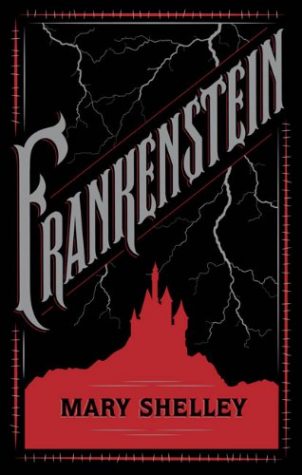“Frankenstein”: Understanding Creation and Accountability
“FRANKENSTEIN”

My first experience with the story of “Frankenstein” was watching the 1931 film starring Boris Karloff with my dad. I can’t say if it was a faithful adaptation, or quote any of the dialogue, but I do remember that it gave me nightmares for a week (I was eight).
Reading the gothic Edgar Allen Poe story “Fall of the House of Usher” this year in English 10 sparked my interest in making the time to read Mary Shelley’s “Frankenstein” after years of thinking about it. As someone who was not overly impressed by “Fall of the House of Usher,” I loved “Frankenstein” and would encourage everyone to read it.
I went into “Frankenstein” expecting it to be warning about the dangers of men playing god, but left realizing that “Frankenstein” isn’t a condemnation of creating life, it’s a warning to do it compassionately.
Victor Frankenstein (the actual title character) is a brilliant and wealthy young man who is used to everything going his way. Bored by those around him, Victor looks into the most impossible feat of science: resurrection. Constructing a new body from corpses, Victor harnesses electricity and raises his creation from the dead… only to find himself terrified and disgusted by what he has made. Victor abandons his creation, leaving the baby-esque being to survive alone and unloved. The creature continually comes back into Victor’s life, and the harder Victor tries to leave it behind, the harder the shadow follows him.
What Mel Brooks’ film “Young Frankenstein” gets so right about its source material is the warning about creating with responsibility. In the movie, Frederick attempts to raise his creature to be fully-functional and capable of living a normal life. While it doesn’t work out, it isn’t for lack of trying. The creature in Shelley’s “Frankenstein” is never given the tools to co-exist. Shunned by their creator and society, the being is forced to live a life of solitude, barred from having loving relationships with other people for fear of being attacked. The creature is Victor’s victim, and while the being does inexcusable things, it is always reactionary to something Victor or another person has done.
Most of the novel is narrated in first-person by Victor, excluding a section in the middle narrated by the creature, and shows just how divorced from his actions Victor is. He continually describes himself as being the victim, and portrays those around him as being dumber, less impressive, and unable to understand him and his genius. It is this arrogance that makes him unable to admit that this imperfect creature is of his making, and the creature’s deeds are caused by his own failures.Victor is not unreliable, but his own beliefs color the way he describes and remembers things
Spoilers in this paragraph: The saddest part of the novel is how, even after all that has happened, Victor is the one controlling the narrative. At the end, we find out Victor has been recounting what happened to the captain of a small ship as he becomes increasingly delusional, caused by a fatal sickness. While the creature does make one last appearance on the boat to say goodbye, the captain’s perception of the being is what he saw through Victor’s eyes. The true antagonist of the novel is the one who will be remembered as an innocent victim, while the victim will be preserved as the villain.
“Frankenstein” is a classic that has and will continue to endure. Clever and incisive 200 years after its original publication, the book is both a beautifully constructed narrative and a reminder to do all things with intention. It is the story of an unparalleled mind, recklessness, a creature, and the devastating price of carelessness. Haunting and suspenseful, “Frankenstein” and its various adaptations are perfect for this fall and Halloween.
9.75/10 would get electrocuted again
Further breakdown:
Writing Quality: 10/10 Enjoyability: 10/10
Pace: 9/10 Visual elements: 7.5/10
Plot development: 9.5/10 Insightfulness: 10/10
Characters: 10/10
Other ways to enjoy:
“The Dark Descent of Elizabeth Frankenstein” by Kiersten White: A reimagining of the story through the eyes of Victor’s fiancée, Elizabeth Lavenza.
“Frankenstein” dir. James Whale: The classic black-and-white film is still a fun, old-school monster movie worth viewing if only for the cheesiness. If you like this one, consider checking out another monster movie from 1931, “Dracula” dir. Tod Browning and Karl Freund, starring Bela Lugosi.





